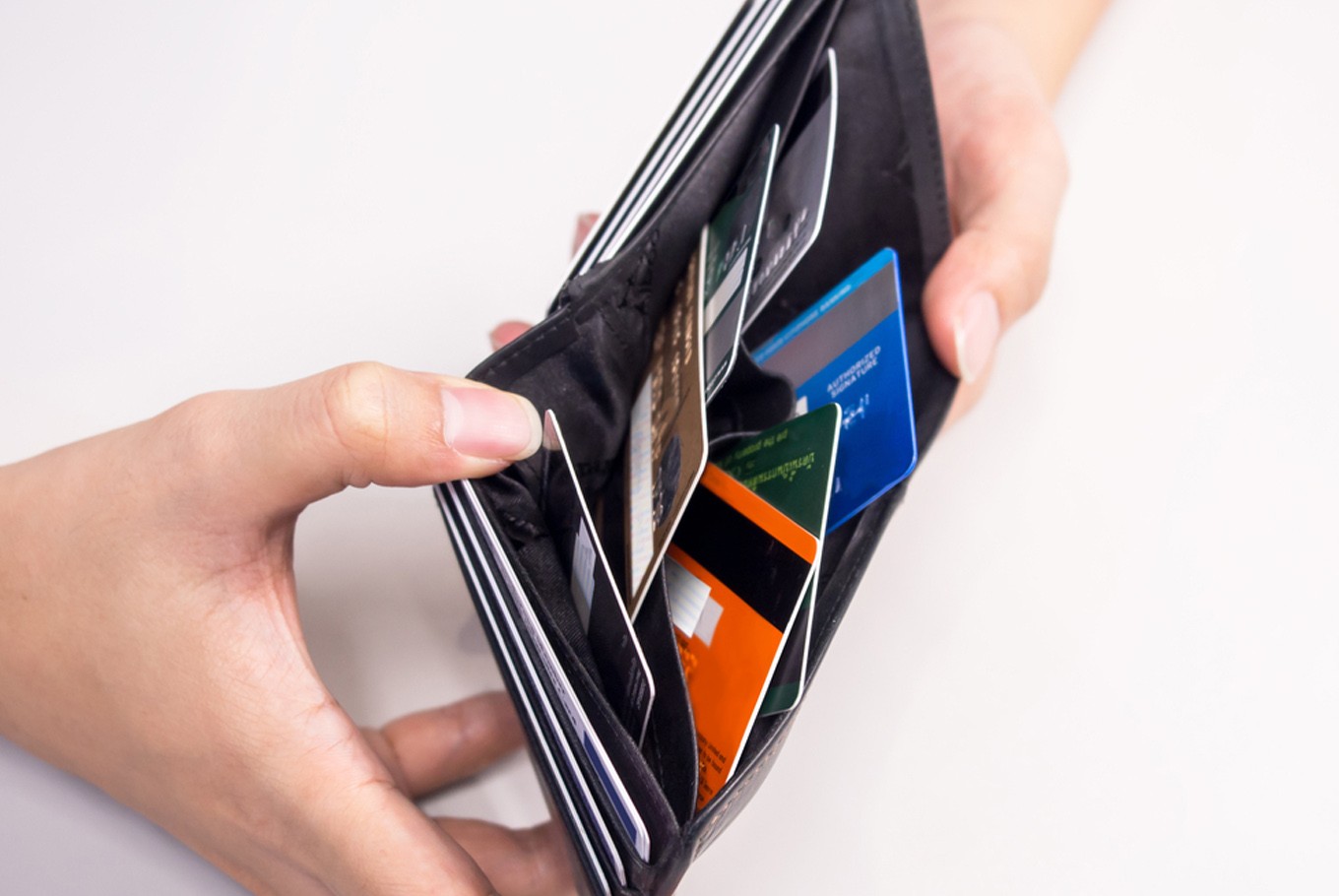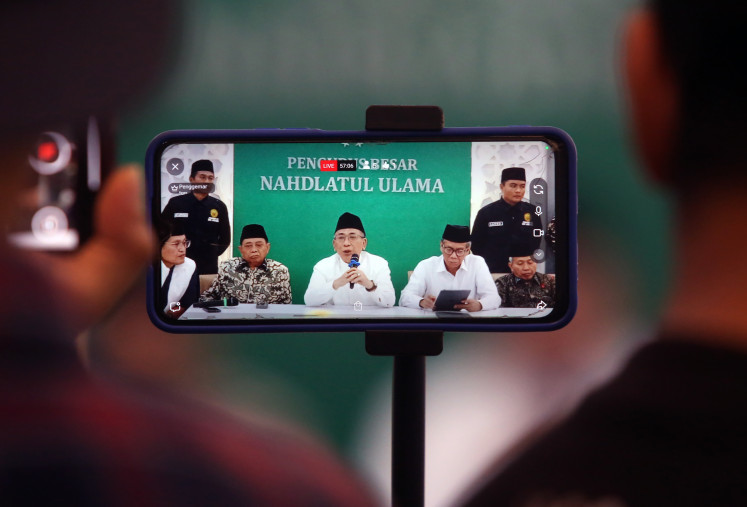Popular Reads
Top Results
Can't find what you're looking for?
View all search resultsPopular Reads
Top Results
Can't find what you're looking for?
View all search resultsE-Money and ‘riba’: Understanding the business model
The term electronic money (e-money) and electronic wallet (e-wallet) become hype these days as the world is moving toward a cashless lifestyle. Both e-money and e-wallet have something in common. They are both digitalized system of payment. Nevertheless, e-money differs with e-wallet in the way it stores the users’ data.
Change text size
Gift Premium Articles
to Anyone
T
he term electronic money (e-money) and electronic wallet (e-wallet) become hype these days as the world is moving toward a cashless lifestyle. Both e-money and e-wallet have something in common. They are both digitalized system of payment. Nevertheless, e-money differs with e-wallet in the way it stores the users’ data. E-money is a chip-based system of payment in which all the data is stored in a chip and takes the form of a card. It is usually provided by banks, such as Tap Cash issued by Bank Negara Indonesia (BNI), Flazz by Bank Central Asia (BCA), E-money by Bank Mandiri, Brizzi by Bank Rakyat Indonesia (BRI).
On the other hand, e-wallet is a server-based system of payment such as T-Cash, Go-Pay, OVO. However, in essence, e-wallet is also a form of e-money. So, in order to avoid any confusion, e-money terminology is used to mention e-wallet in this article.
The trend in using e-money for payment in Indonesia is growing each year. From the survey conducted by DailySocial (2017), it was found in 2017 that approximately 56.8 percent of Indonesian consumers have used e-money in less than a year, 34.4 percent between one to three years, whereas the rest have used it more than three years.
Bank Indonesia reported that by the end of the fourth quarter, 2017, the e-money transaction reached for about Rp 12 trillion (about US$854.70 million). The number increased by 26.2 percent to about Rp 47 trillion by the end of 2018. It keeps increasing and predicted to grow further in 2019 as other banks also plan to offer their own e-money to their customers.
Bank Indonesia (BI) mended its previous regulation concerning electronic money to tighten its control over the growing circulation of the e-money. The amendment was contained in BI’s Regulation (PBI) No. 20/6/PBI/2018 on e-money, which supersedes its previous ruling Regulation (PBI) No. 11/12/PBI/2009 on e-money.
However, the movement faces an obstacle as several Muslim respected scholars issued the individual fatwa against e-money. They said that it is riba and many people strongly followed that individual fatwa. Riba can be defined as an excess/addition that can occur in both debt and sale transaction. In a sale transaction, riba happens if certain commodity is exchanged but different in values during a certain period of time.
The fatwa against e-money was made based on the initial assumption that the aqad (agreement) between users/consumers and e-money provider is qardh (debt). Therefore, in fiqh, there is a maxim that every debt producing an excess/addition/advantage is considered as riba. It is categorized as one of the big sins in Islam.
The fatwa also motivated by the hypothesis that the business model of e-money is just like banks’ since it runs on the financial service industry. In fact, it is not the same. In the bank industry, the business model is obvious, that is, banks survive by rotating consumers’ money to the third party in several ways. The bank will get an advantage (margin or fee) from the third party as the result of rotating consumers’ money, and the consumers will also get the same as the reward for ‘lending’ the money to the banks. Without consumers’ money, banks will never survive. Then, it is understood that in the bank industry, debt is the core business model. Consequently, following the fiqh maxim as mentioned previously, the interest consumers get from the bank is considered as riba. Yet, the business model of e-money is not like the banks.
In today’s disruption era, a business can be disrupted by another business within similar industry but with different business model. For instance, Netflix offers consumers some movies exactly like movie theater does. However, Netflix is not a movie theater because their business model is not the same. University and school provide society with education and knowledge exactly what Khan Academy does. However, Khan Academy is not a university or school because they have a different business model.
Similarly in the case of e-money and banks. Banks and e-money providers provide customers with financial services, however, e-money providers are not banks! E-money providers do not survive by rotating users’ money, and it is regulated by the government. Based on the Bank Indonesia Regulation (PBI) No. 20/6/PBI/2018 on e-money article no. 49 verse no. 1, it is stated that e-money providers are allowed to use the users’ money only to fulfill their responsibility to the users. This regulation is also agreed by Go-Pay as it is stated on its’ website.
By this, it is clear that the individual fatwa mentioned earlier is prematurely made. Since the e-money providers are prohibited to use users’ money, so it is implied that the transaction between e-money providers and the users is not qardh but ijaroh (exchange of service). As the consequence, the discount or cash back is given by e-money providers to the users are not considered as riba. It is allowed and halal.
E-money providers can have various business models. In general, e-money providers earn a profit by, but not limited to, taking the commission from the merchant partners, or get the commissions from e-commerce, charging a service fee to the users or even offering advertising slot. That is how OVO survived. OVO partnered with Grab and Tokopedia by providing a server-based system of payment, and of course, it is not free. OVO charges them for the service it provides. These types of business model are considered as the ijaroh and it is halal.
Moreover, the National Sharia Board of the Indonesian Ulema Council (DSN-MUI) has also issued their institutional fatwa No. 116/DSN-MUI/IX/20I7 concerning e-money. From that institutional fatwa, even though there are some points need to be criticized, but it can be concluded that e-money is not riba.
So, those who made individual fatwa against e-money must reconsider it by having a closer look at e-money business model. The fatwa must be made carefully after considering a holistic approach and must be relevant both in the content and context. More importantly, the fatwa must be made not individually but institutionally after having the discussion with related stakeholders.
***
The writer is the lecturer and researcher at the Department of Management, the Faculty of Economics, Universitas Islam Indonesia (UII), Yogyakarta.











